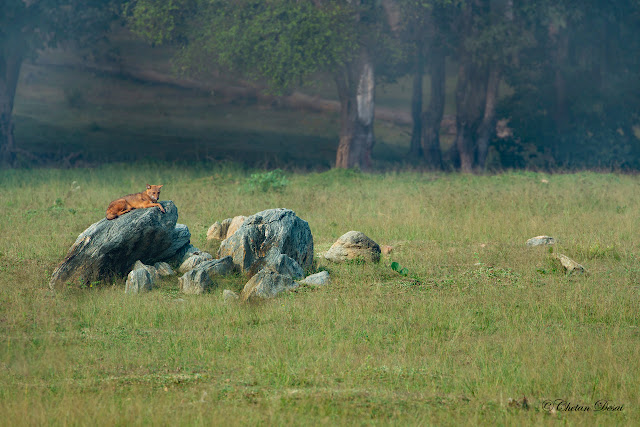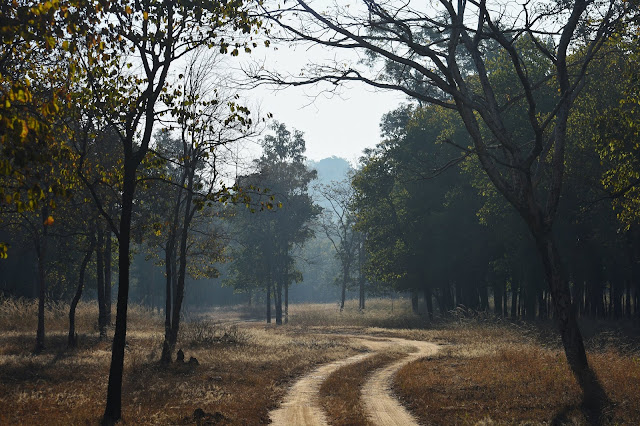You won’t believe me at first when I say, we’ve known the mystic land of Pench ever since we were little kids. We loved every bit of how fiction and reality interlaced, weaving an age old story of the adventurous little Mowgli and his wild friends who found comfort in the wilderness, swayed from branches all day, fought the mighty Shere Khan and went after the Red Flower! Take a peek into your childhood days when watching the venturesome Mowgli on TV made you smile. I remember how diligently I never missed an episode! In the cartoon, Mowgli’s home was the astounding forest of Pench, a place that inspired Rudyard Kipling to pen down one of the most loved and appreciated work of children’s literature; The Jungle Book. I almost instantly fell in love with this jungle on my very first safari, understanding why Kipling had decided upon this very forest as the setting for his story.
Nestled in the Chhindwara and Seoni districts of Madhya Pradesh, Pench National Park gets its name from the beautiful Pench river that flows through it. It cuts through Madhya Pradesh as well as the neighbouring state of Maharashtra, making it possible to enter the park from gates in both these districts. Pench has always been special to its visitors for it takes possession and enchants the soul in a way that simply leaves you rejuvenated at the beginning and end of each safari.
Once you undertake a safari here, you won’t simply like Pench, but fall in love with it as its beautiful glazy rivers shall surprise you and each dusty path would hold the promise of unexpected sightings. Sprawled across an area of 758 sq. km, this fine forest is a mix of tropical moist and dry deciduous vegetation with lush canopies, open valleys, grassy patches and shrub covers. A blissful day spent here will give you an opportunity to witness and photograph its rich wildlife namely the Royal Bengal tiger, wild dog, jackal, sloth bear, wild boar, langurs, striped hyena, fox, gaur, and more. A variety of deer such as the spotted deer, barking deer, four-horned antelope, sambar deer and nilgai are sure to add more life to your safari. Moreover, it is not just the regal tiger or a sloth bear that you would be on the lookout for. Pench is distinctly one of the best places to spot a leopard and the paths of this land take you deep into the wilderness, where unfold tales of the much loved 'Jungle Book’.
As the afternoon rays filter through the dry teak, warbling birds greet you from above. Deer scamper away and langurs peek from behind towering trees. Where the crystal blue skies meet the lush canopies, the paths of Pench seem neverending. You may unexpectedly find a leopard royally lounging on a huge boulder or indulging in an afternoon siesta on a tree. Trust me when I say this, people often get stunning images of leopards here and with breathtaking backdrops too! Apart from leopards and the anticipated sightings of a tiger or two, deer are commonly seen grazing on open patches of green land, wild dogs are spotted in many parts of the reserve, gaurs can commonly be seen near the bamboo thickets or streams and if the odds are in your favour, you might spot a pack of jackals wandering for food, adding that remaining bit of excitement to the ride.
For those who enjoy birding, more than 200 species of birds in Pench are an absolute delight to watch. Indian scops owl, Indian roller, jungle fowl, Indian pitta, orioles, treepies, yellow-throated sparrow, laughing doves, spotted doves, ibis, drongos and many more will give you plenty to photograph. The white-eyed buzzard, crested serpent eagle, Indian grey hornbill, black-shouldered kite, jacobin cuckoo, yellow-crowned woodpecker and vultures are a rare but welcome sight.
It is indeed true that Pench, the land of The Jungle Book never fails to take you by surprise. Where stories of victory and defeat, love and brotherhood unfold, Pench ought to be a must-visit destination on your list!
How to reach Pench National Park?
The easiest way to reach Pench is by Air. You can catch a flight to either Nagpur (Dr. Babasaheb Ambedkar International Airport) or Jabalpur (Jabalpur Airport) and then book/hire a vehicle to reach the national park which is at a distance of 130 km from Nagpur and 213 km from the latter.
If you choose to take the bus, Seoni (part of MP) is your best option to reach Pench. Cabs or self-driving may also be a good option as the national park is situated on the Nagpur-Jabalpur highway and is easily accessible.
If you decide to travel by train and make the most of your trip with friends or family, the Seoni railway station is the nearest station to Pench at about 72 km and is also well connected to major cities. Another option is the Jabalpur railway station which is at a distance of 205 km from Pench.
What’s the best time to visit?
While planning a trip, the first thing that often comes to our mind is the weather and the same goes for a wildlife safari. Summers are usually a good time to plan a safari to Pench as your chances of spotting a big cat relaxing in the water holes is undoubtedly high. Though the heat is unforgiving in an open jeep, you will still be able to enjoy the safari if you carefully pack for the summer, keeping a sunscreen, hat, sun coat, a pair of sunglasses and bottled water with you at all times!
As the national park is closed for the monsoon, a safari in the winter is also a good option. Dewdrops on grass like tiny diamonds and a blanket of fog makes for a chilly yet calm and beautiful morning safari. You’re likely to find a variety of migratory birds that fly to Pench at this time as well. So, once your suitcase is filled with more than enough woollens, you’re good to go!
So, if you’re thinking of relieving that childhood memory, plan your next trip to Pench and watch as the jungle unfolds its ancient tale of the wild for you…
All images are subject to copyright to their respective owners
Pench: Where the Tale of ‘The Jungle Book’ Comes Alive; An article by Shamita Patharkar.
Wish to know more about us? Click here!






😁
ReplyDeleteVery well written. After reading this article it invoked the feeling of going to the safari and see the uncage wildlife once.
ReplyDeleteThanks Ratika! We shall surely plan a safari.
DeleteWow.. description is like watching new jungle book movie trailor itself..
ReplyDeleteThank you. I appreciate it.
DeleteExcellent. Very well covered.
ReplyDeleteThank you so much :)
Delete